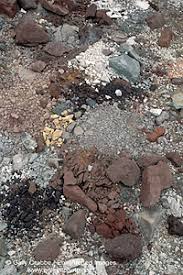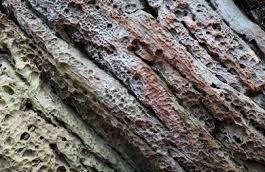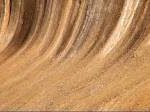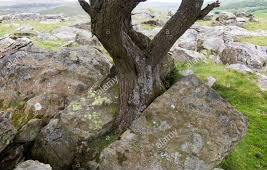WHAT IS WEATHERING- TYPES & PROCESS
INTRODUCTION
- The mechanical breakdown of rocks at the Earth’s surface is called weathering. Plant and animal life, atmosphere and water are the major agents of weathering.
- Rocks are mixture of minerals.
- Rocks containing more complex minerals weather more easily e.g. sedimentary rocks are more resistant to weathering than igneous and metamorphic rocks.
- The chemical and biological changes take place after weathering of rocks which leads to the formation of soil.
TYPES OF WEATHERING
There are three types described below:
- Physical or Mechanical weathering
It involves the breakdown of rocks and soils through direct contact with atmospheric conditions, such as heat, water, ice and pressure and without accompanying any chemical change.
Mechanical weathering is the disintegration of rock into smaller fragments i.e. abrasion. The various agents of physical weathering are-
- Heat & Cold- Heating of rocks by sunlight or fires can cause expansion of their constituent minerals. Different minerals have different coefficient of expansion and contraction and consequently peeling and flaking off takes place. When water freezes, it expands with a force of about 1465 Mg/m^2, disintegrating huge rock masses and dislodging mineral grains from smaller fragments. The repeated heating and cooling exerts stress on the outer layers of rocks, which causes their outer layers to peel off in thin sheets. The process of peeling off is also called exfoliation.
- Freezing & Thawing- Freeze induced weathering occurs mainly in environments where, there is a lot of moisture, and temperatures frequently fluctuate above and below freezing point. When water freezes, its volume increases by about 9% and the force exerted is 150 tons/square foot. Repeated freezing & thawing cycles weaken the rocks, which over time; break up along the joints into angular pieces of rock fragments.
- Glaciers- Generally the ice has greater grinding power and force exerted by it is 40lb/square inch for every 100 feet thickness. Abrasion by water, ice, and wind processes loaded with sediment can have tremendous cutting power. In glacial areas, huge moving ice masses embedded with soil and rock fragments grind down rocks in their path and carry away large volumes of materials.

Crushed Rock due to Mechanical weathering

- Ocean waves- The coastal areas formed by the weathering of wave actions over geological times.
- Erosion by streams- streams grind the transported materials with water into powdery form.
- Chemical Weathering
Chemical weathering transforms the original material into a substance with a different composition and different physical characteristics. It changes the composition of rocks, often transforming them when water interacts with minerals to create various chemical reactions. Usually, it involves disappearance of minerals and formation of secondary products.
Chemical weathering is minimum under desert areas due to the absence of water, and arctic & alpine conditions due to low temperature.

Chemical weathering
- Simple solution- During raining and thundering, ammonia, nitrous oxide, nitrogen peroxidase etc. is dissolved in rainwater.
H2O + CO2 → H2CO3 (carbon dioxide + water → carbonic acid) - Carbonation- The process in which atmospheric carbon dioxide leads to solution weathering. Carbonation occurs on rocks which contain calcium carbonate, such as limestone and chalk. This takes place when rain combines with carbon dioxide or an organic acid to form a week carbonic acid which reacts with calcium carbonate (the limestone) and forms calcium bicarbonate.
Carbonation is a large feature of glacial weathering-
H2CO3 + CaCO3 → Ca(HCO3)2
Carbonic acid + calcium carbonate → calcium bicarbonate
the soluble bicarbonate is leached to the lower layers where CO2 is liberated and the insoluble CaCO3 is precipitated.
- Oxidation- During weathering, environment chemical oxidation of various metals occurs. Oxidation of Fe2+ (iron) and combination with oxygen and water to form Fe3+ hydroxides and oxides such as goethite, limonite, and hematite are most common. This gives the affected rocks a characteristic reddish-brown color which crumbles easily and weakens the rock.
2 FeSiO3 + 3H2O+ O → 2Fe(OH) 3 + 2SiO2 - Reduction- Under anaerobic condition following reaction occurs-
Fe2O3 + H2 → 2FeO + H2O
(Hematite) - Hydration- This reaction mostly occurs in humid regions-
2Fe2O3 + 3H2O → 2Fe2O3 . 3H2O
(Red hematite) - Hydrolysis- It affects silicate and carbonate minerals. In such reactions, pure water ionizes slightly and reacts with silicate minerals.
Mg2SiO4+ 4 H+ + 4 OH− ⇌ 2 Mg2+ + 4 OH− + H4SiO4
- Biological weathering
It may be physical and/or chemical weathering by biological agents. A number of plants and animals may create chemical weathering through release of acidic compounds. The moss growing on roofs is an example.

Biological weathering
The most common forms of biological weathering are the release of chelating compounds (i.e. organic acids) and of acidifying molecules (i.e. protons, organic acids) by plants so as to break down aluminum and iron containing compounds in the soil.
Decaying remains of dead plants in soil may form organic acids which, when dissolved in water, cause chemical weathering.
Read more..
TYPE OF ROCKS- DEFINITION, PROPERTIES & EXAMPLES
FORMATION OF SOIL-PROCESS & FACTOR OF SOIL FORMATION
Hi! I¡¯m a Portuguese Girl living in Charlotte, I found your article to be soooo Usefull!
Thanks for your interest
Hi! I¡¯m a Japanese Girl living in Houston, I found your article to be soooo Usefull!
thank you for your interest.